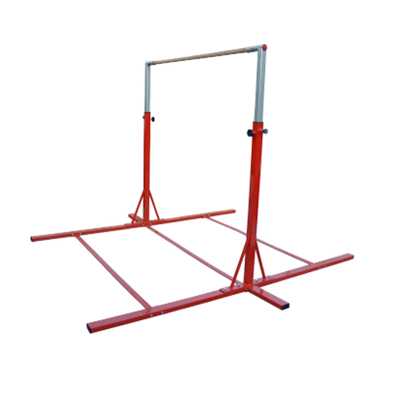What is the most difficult apparatus in gymnastics?
The most difficult apparatus in gymnastics varies depending on the type of event, gender group and judging criteria. The following is an analysis from two dimensions: competitive gymnastics and artistic gymnastics:

Competitive gymnastics: The horizontal bar is recognized as the "king of apparatuses"
In competitive gymnastics, the horizontal bar is recognized as the most challenging apparatus due to its technical difficulty and risk. Its core difficulties are reflected in:
Complexity of movement: Athletes need to complete a combination of difficult vacant (such as somersaults), turns and flying movements, which requires extremely high strength, coordination and spatial perception.
Very low tolerance: The horizontal bar movements have strict requirements on technical details. Minor mistakes may cause the hand to slip or fall, directly losing the chance to score or even getting injured.
Psychological pressure: The open structure of the apparatus increases the psychological burden on athletes, and they need to maintain absolute concentration during high-speed movements.
Competitive gymnastics: Special challenges of pommel horse and balance beam
Although the difficulty of the horizontal bar is outstanding, the special challenges of other apparatuses cannot be ignored:
Pommel horse (men): It is necessary to complete continuous circular movements and complex hand techniques without stopping, which requires extremely high upper limb strength, sense of balance and rhythm control, and it is difficult to recover the rhythm after a mistake.
Balance beam (women): Complete flips, jumps and turns on an apparatus that is only 10 cm wide. It is necessary to maintain extreme body control and mental concentration under high pressure. A slight mistake may cause a fall.
Rhythmic gymnastics: Difficulty and coupling challenges of hoop apparatus
In rhythmic gymnastics, hoop apparatus is considered one of the most difficult apparatuses to master due to technical requirements and difficulty of action coupling:
Technical complexity: It is necessary to integrate four types of difficult body movements such as jumping steps, single-leg rotations, balance, and flexibility/waves into the set in a balanced manner, and complete the mandatory connection between throwing and receiving the hoop.
High coupling requirements: Actions such as rotational throwing and oblique throwing place extremely high demands on the ability to control the apparatus, and it is necessary to achieve precise synchronization of body movements and apparatus techniques.
The international gap is significant: Chinese athletes lag significantly behind top foreign athletes (some reaching 1.0) in the difficulty coefficient of turns (0.2-0.3), and the shortcomings in technical coupling further widen the competitive gap.
padel court,Gymnastic mats, basketball racks, volleyball posts, tennis dwellings, badminton posts, adult gymnastic equipment, parallel bars, horizontal bars, uneven bars, gymnastic rings, balance beams, saddles, hydraulic referee tables, table tennis tables, outdoor fitness equipment, garden fitness equipment
Website:
http://hransports.com/article/264.html